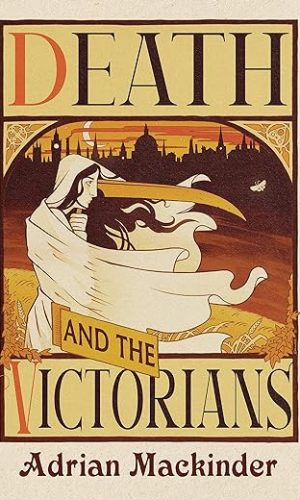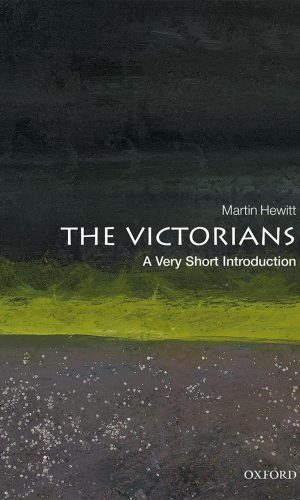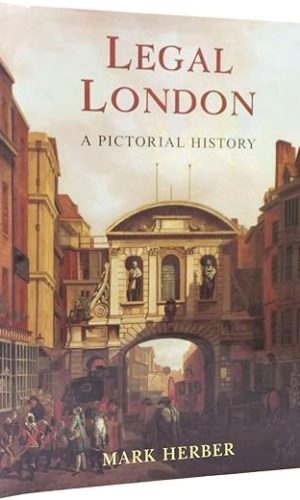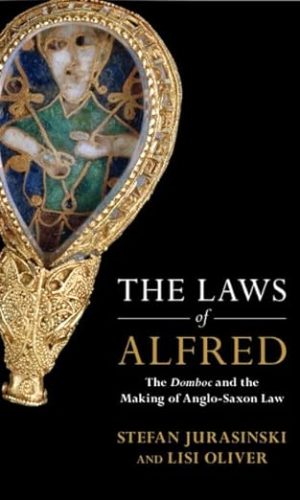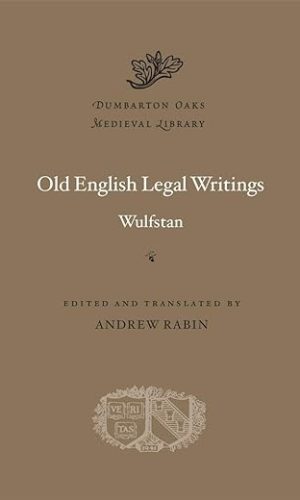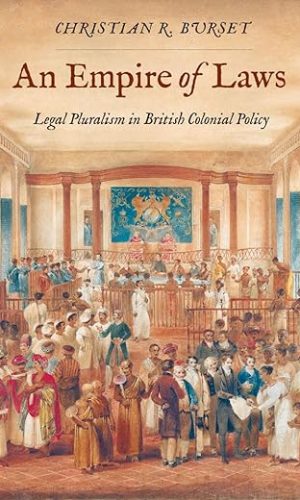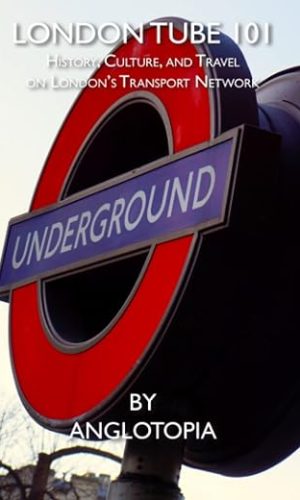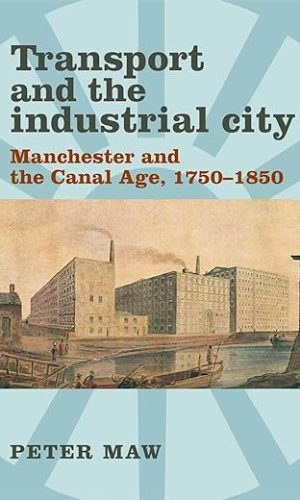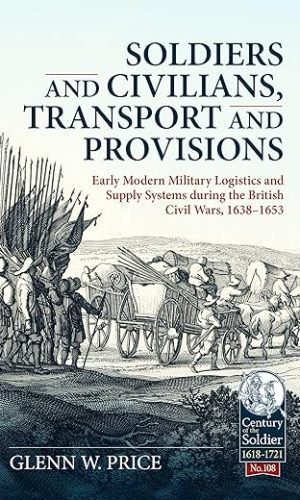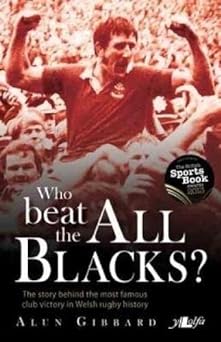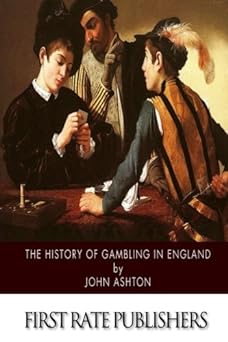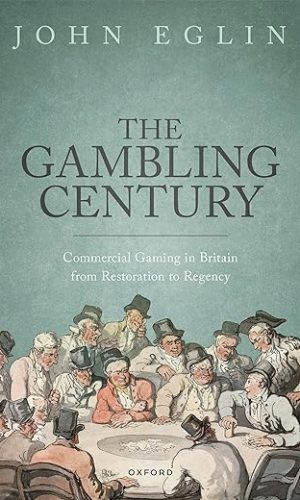Great Britain
-
Death and the Victorians: A Dark Fascination
From spooky stories and real-life ghost hunting, to shows about murder and serial killers, we are fascinated by death – and we owe these modern obsessions to the Victorian age. Death and the Victorians explores a period in history when the search for the truth about what lies beyond our mortal realm was matched only by the imagination and invention used to find it. Walk among London’s festering graveyards, where the dead were literally rising from the grave. Visit the Paris Morgue, where thousands flocked to view the spectacle of death every single day. Lift the veil on how spirits were invited into the home, secret societies taught ways to survive death, and the latest science and technology was applied to provide proof of the afterlife. Find out why the Victorian era is considered the golden age of the ghost story, exemplified by tales from the likes of Charles Dickens, Elizabeth Gaskell, Oscar Wilde and Henry James. Discover how the birth of the popular press nurtured our taste for murder and that Jack the Ripper was actually a work of pure Gothic horror fiction crafted by cynical Victorian newspapermen. Death and the Victorians exposes the darker side of the nineteenth century, a time when the living were inventing incredible ways to connect with the dead that endure to this day.Read more
£19.00 -
Victorian London Scenes: Journey Through The Charming Victorian Of London Coloring Book For Adults
Immerse yourself in the charm and elegance of a bygone era with “Victorian London Scenes : Journey Through The Charming Victorian Of London Coloring Book For Adults,” an exquisitely crafted coloring book that transports you back to the enchanting world of 19th-century England. Step into the bustling streets of Victorian London and experience the rich history, architectural marvels, and bustling life of this iconic city.Each illustration takes you on a journey through time, showcasing iconic landmarks, bustling London Street, serene town, and the Victorian life. As you bring these scenes to life with your artistic touch, you’ll find yourself strolling along cobblestone streets lined with elegant townhouses, ornate lampposts, and majestic cathedrals. Immerse yourself in the vibrant energy of the city, as horse-drawn carriages pass by, and finely dressed ladies and gentlemen promenade through the city.
Whether you’re seeking relaxation, a trip through history, or a unique way to explore Victorian London, this coloring book will be your perfect companion. Allow your creativity to flourish and your imagination to wander as you embark on this delightful coloring journey through the enchanting streets of Victorian London. So, pick up your favorite coloring tools and immerse yourself in the romance and elegance of this extraordinary era. Let the enchanting world of “Victorian London Scenes” unfold before your eyes!
Read more
£6.20 -
The Victorians: A Very Short Introduction (Very Short Introductions)
bVery Short Introductionsb: Brilliant, Sharp, Inspiring /bThe Victorian period may have come to an end over 120 years ago, but the Victorians continue to be a vital presence in the modern world. Contemporary Britain is still in large part Victorian in its transport networks, sewage systems, streets, and houses. Victorian cultural legacies, especially in art, science, and literature, are still celebrated. The first to have to grapple with many of the challenges of modern urban society, we continue to look to the Victorians for inspiration and solace. And we are increasingly aware of the ways their global actions shaped, often for ill, the world around us. Much mythologised, inexhaustibly controversial, the Victorians are an inescapable reference point for understanding the modern histories not just of Britain and its empire, but of the world.
In The Victorians: A Very Short Introduction Martin Hewitt offers a guide through the thickets of judgement and debate which have grown around the period and its people, to offer a historical overview of the Victorians and their legacies. He seeks to answer five crucial questions. Why have the Victorians continued occupy such a prominent place in the cultures of not just the anglophone world? How far does it make sense to think of a 64-year period arbitrarily given an identity by the longevity of the Queen as an identifiable historical period in a general sense? How justified are the value-laden versions of the Victorians which argue for the existence of a particular world view called ‘Victorianism’? Beyond ideology, what was Victorian Britain actually like – and in particular, what was distinctive about it? Who were the Victorians – not just the eminent few, but the population as a whole? And finally, how far and with what results did the Victorians and their culture spread across the globe?
In answering these questions, Hewitt cautions against some long-held orthodoxies, throws a light on some less well-known aspects of the period, and urges the importance of understanding the Victorians on their own terms if we are to effectively engage with their legacies.
ABOUT THE SERIES: The Very Short Introductions series from Oxford University Press contains hundreds of titles in almost every subject area. These pocket-sized books are the perfect way to get ahead in a new subject quickly. Our expert authors combine facts, analysis, perspective, new ideas, and enthusiasm to make interesting and challenging topics highly readable.
Read more
£7.10£8.50 -
Legal London: A Pictorial History
London has been home to more lawyers, for more centuries, than any other city on earth. Paris ran it neck-and-neck until the 18th century, after which London romped away as the national and then imperial capital of a legal system with centralized Royal Courts of Justice, Inns of Court, Courts of Appeal, debtors prisons, the Old Bailey, the Archbishop’s Court at St Mary le Bow, the Bridewell, the notorious Fleet Prison, and the Metropolitan Police. No other city so celebrates, in surviving buildings and institutions, the work of judges, lawyers, litigants, criminals, and the police! This new book does justice to them all. Covering both civil and criminal aspects of the law, the author’s narrative account is enormously expanded by 200 photographs and engravings, each fully captioned; plus maps to show the location of the courts, Inns, prisons, and other places of punishment throughout the metropolis. This fascinating study of the law at work in days gone by is both entertaining and informative. Though of particular value to everyone interested in London history, it will appeal to members of the legal and law enforcement professions everywhere that the “English” system and tradition has left its mark.Read more
£3.20 -
The Laws of Alfred: The Domboc and the Making of Anglo-Saxon Law (Studies in Legal History)
Alfred the Great’s domboc (‘book of laws’) is the longest and most ambitious legal text of the Anglo-Saxon period. Alfred places his own laws, dealing with everything from sanctuary to feuding to the theft of bees, between a lengthy translation of legal passages from the Bible and the legislation of the West-Saxon King Ine (r. 688–726), which rival his own in length and scope. This book is the first critical edition of the domboc published in over a century, as well as a new translation. Five introductory chapters offer fresh insights into the laws of Alfred and Ine, considering their backgrounds, their relationship to early medieval legal culture, their manuscript evidence and their reception in later centuries. Rather than a haphazard accumulation of ordinances, the domboc is shown to issue from deep reflection on the nature of law itself, whose effects would permanently alter the development of early English legislation.Read more
£21.80 -
Old English Legal Writings: 66 (Dumbarton Oaks Medieval Library)
Archbishop Wulfstan of York (d. 1023) was a powerful clergyman and the most influential political thinker of pre-Conquest England. An advocate for the rights and privileges of the Church, he authored the laws of King Aethelred and King Cnut in prose that combined the rhetorical flourishes of a master homilist with the language of law. Some works forged a distinctive style by adding rhythm and alliteration drawn from Old English poetry. In the midst of Viking invasions and cultural upheaval, Wulfstan articulated a complementary relationship between secular and ecclesiastical law that shaped the political world of eleventh-century England. He also pushed the clergy to return to the ideals of their profession. Old English Legal Writings is the first publication to bring together Wulfstan’s works on law, church governance, and political reform. When read together, they reveal the scope and originality of his thought as it lays out the mutual obligations of the church, the state, and the common people. This volume presents new editions of the Old English texts alongside new English translations.Read more
£26.90 -
An Empire of Laws: Legal Pluralism in British Colonial Policy (Yale Law Library Series in Legal History and Reference)
A compelling reexamination of how Britain used law to shape its empire
For many years, Britain tried to impose its own laws on the peoples it conquered, and English common law usually followed the Union Jack. But the common law became less common after Britain emerged from the Seven Years’ War (1754–63) as the world’s most powerful empire. At that point, imperial policymakers adopted a strategy of legal pluralism: some colonies remained under English law, while others, including parts of India and former French territories in North America, retained much of their previous legal regimes.
As legal historian Christian R. Burset argues, determining how much English law a colony received depended on what kind of colony Britain wanted to create. Policymakers thought English law could turn any territory into an anglicized, commercial colony; legal pluralism, in contrast, would ensure a colony’s economic and political subordination. Britain’s turn to legal pluralism thus reflected the victory of a new vision of empire―authoritarian, extractive, and tolerant―over more assimilationist and egalitarian alternatives. Among other implications, this helps explain American colonists’ reverence for the common law: it expressed and preserved their equal status in the empire. This book, the first empire-wide overview of law as an instrument of policy in the eighteenth-century British Empire, offers an imaginative rethinking of the relationship between tolerance and empire.Read more
£52.30 -
London Tube 101: History, Culture, and Travel on London’s Transport Network
We are thrilled to announce Anglotopia’s newest book: London Tube 101- History, Culture, and Travel on London’s Transport Network. This new publication is your complete guidebook to London’s iconic transport network’s history, culture, and guide to using the famous London Tube network. The book will be released in September and we need to start pre-orders now.
We do a deep dive into the London Tube’s fascinating history, covering the history of the tube network, fascinating stories, London’s abandoned and hidden Tube stations and so much more. This comprehensive book covers everything from the first Metropolitan Railway to the newly opened Elizabeth Line. In addition to all of this, we’ll provide useful and practical information using the network on your travels. It’s a combination of a history book, guidebook, and culture book.
Following a similar format to our previous books, such as 101 Budget Britain Travel Tips and 101 London Travel Tips it is a pleasure to read. Tube enthusiasts will adore this 300-page book, sure to learn something new about the most famous rail network in the world. From the history of every tube line, including facts about each tube line, to long-reads on the history of specific Tube-related topics, this comprehensive guide is a must-have for the Tube enthusiast.
Read more
£19.00 -
RAF Transport Aircraft (Modern Military Aircraft Series)
From their modest origins with BE.2c and Vickers Victoria biplanes delivering food and ammunition in the Mesopotamian deserts to the massive Globemasters delivering hardware in the same theatre a century later, transport aircraft have played a key role in Britain’s wars. It was the Cold War that saw transport aircraft become necessary war-fighting equipment. Operation Corporate in 1982 identified the need for large-capacity strategic transport aircraft, something reinforced by Operation Granby in 1990-91, and led to the acquisition of the Lockheed TriStar and Boeing C-17A Globemaster. When the operations in Afghanistan and Iraq began, the RAF’s transport fleet was ready, and with the new model Hercules, and the Airbus Voyager and Atlas, Britain’s armed forces have a transport force second to none. First in, last out’ is a concise description of the operations of the RAF’s transport force. Since 1915, aircraft have supported troops on the ground, carried personnel to and from war zones, evacuated civilians and provided succour to the needy. RAF Transport Command’s motto, Ferio Ferendo, translates as I strike by carrying’, and that is exactly what transport aircraft have done for over a century. With over 130 photographs, this book describes the evolution of the aircraft that provided the airlift capacity for Britain’s armed forces wherever they served, and as the 2021 Operation Pitting showed, transport aircraft are still last out.Read more
£12.10£15.20 -
Transport and the Industrial City: Manchester and the Canal Age, 1750-1850
This book presents the first scholarly study of the contribution of canals to Britain’s industrial revolution. Although the achievements of canal engineers remain central to popular understandings of industrialisation, historians have been surprisingly reticent to analyse the full scope of the connections between canals, transport and the first industrial revolution. Focusing on Manchester, Britain’s major centre of both industrial and transport innovation, it shows that canals were at the heart of the self-styled Cottonopolis. Not only did canals move the key commodities of Manchester’s industrial revolution -coal, corn, and cotton – but canal banks also provided the key sites for the factories that made Manchester the ‘shock city’ of the early Victorian age. This book will become essential reading for historians and students interested in the industrial revolution, transport, and the unique history of Manchester, the world’s first industrial city.Read more
£57.80£66.50 -
Soldiers and Civilians, Transport and Provisions: Early Modern Military Logistics and Supply Systems During the British Civil Wars, 1638-1653: 108 (Century of the Soldier)
Until now historical works have neglected to fully consider the events of the British Civil Wars with respect to the logistics and supply systems. As such, this book evaluates and challenges these narratives of the wars by tackling historical debates through the lens of these logistics and supply systems at an operational level. How the military logistics and supply systems of the period functioned is revealed, including what methods of supply were used, what decisions and events these systems impacted, and how these related to strategic and tactical outcomes of the wars.The book investigates the facets of land, coastal, and riverine transportation, the supply of manpower to the armies, and the supply of food, clothing, and shelter to multiple forces across various conflicts throughout the British Civil Wars. With an application of a broad range of both civilian and military sources, this research employs archival and manuscript materials from national and local archives across the British Isles, contemporary tracts, letters, books, and pamphlets, as well as secondary literature from a variety of historical fields–from military history, economic and social studies, as well as reconstructive archaeology. As a result, the study outlines regional disparity in military logistics systems due to reliance on pre-existing civilian structures and methods–which had not been developed with a military purpose in mind and resulted in substantial logistical and supply differences that consequently, and heavily, favored one faction over another.
Many questions that have bedevilled previous historiography–and some that remain contentious even today–are likewise explored through this new perspective. This includes, but is not limited to, countering the simple narrative that Royalist armies were terribly supplied in comparison to Parliament, placing the Royalists’ Gloucester campaign in its correct strategic context, highlighting Catholic recruitment to Cromwell’s forces in Ireland, and providing a reasonable and informed explanation for Prince Rupert’s decision to fight at Marston Moor–all through the lens of logistics and supply. It emphasizes the absolute necessity of interactions between civil and military authority across multiple levels to supply early modern forces, providing a more nuanced history of civilian and military interactions than the popular view of soldiers imposing their will on a suffering population.
The book’s analysis of logistics and supply during the British Civil Wars, a focus not undertaken in such detail so far for the period, will provide a compelling read for those with interests in the operational realities of warfare during the seventeenth century more broadly, and the British Civil Wars in particular.
Read more
£25.80£33.30 -
Buses in South and West Yorkshire
The Metropolitan counties of South and West Yorkshire have some of the most intensive bus operations outside Birmingham and London. The former metropolitan counties include considerable amounts of rural terrain alongside densely populated urban areas. Author Peter Tucker takes us on a lively photographic tour of the region’s transport scene. The journey takes us everywhere from genteel towns like Horsforth, Ilkley and Wetherby down to areas of heavy industry such as the Don Valley in Sheffield. In between we visit places as contrasting as Barnsley, Dewsbury, Pontefract and Rotherham and Swinton. Yorkshire’s cosmopolitan cities are not forgotten either, as we explore Bradford, Leeds, Sheffield and Wakefield. Featuring operators such as Arriva, First and Stagecoach, this publication also looks back to the 1990s with photographs depicting buses of the now defunct Yorkshire Rider, Yorkshire Traction and West Riding.Read more
£11.70£15.20Buses in South and West Yorkshire
£11.70£15.20 -
Culture, Politics and Sport: Britain in the 20th Century: Bitesize Britain (Bitesize Britain: Britain in the 20th Century)
Explore the captivating journey of Britain through the 20th century with “Culture, Politics and Sport: Britain in the 20th Century”. This compelling book takes readers on a unique voyage through time, offering bite-sized chunks of social history that delve into the cultural, political, and sporting landscapes of each decade. From the dawn of the new century to the eve of the new millennium, this bite-sized guide provides an insightful and engaging account of Britain’s transformation over 100 years. Each decade is explored in a dedicated chapter, allowing readers to gain an understanding of the key events, societal shifts, and influential figures that shaped Britain. From the Roaring Twenties to the swinging 1960s and from the turbulent 1980s to the dawn of the digital age, the book offers a panoramic view of the nation’s social fabric.
The book seamlessly weaves together the intertwined threads of culture, politics and sport, revealing their impact on the British society throughout the 20th century. Discover how the arts, music, and literature evolved, reflecting the changing values and aspirations of the people. Uncover the political upheavals that shaped the nation, from the suffrage movement and the rise and fall of political ideologies to the transformative post-war welfare state. And dive into the world of British sport, where heroes were made, records were broken, and moments of triumph and heartbreak captured the nation’s spirit.
Through a combination of engaging storytelling and concise historical analysis, “Culture, Politics and Sport: Britain in the 20th Century” brings history to life. Whether you’re a history enthusiast or simply curious about the past, this book provides a fascinating exploration of the transformative events and social dynamics that have shaped modern Britain.
Read more
£14.20 -
Now That’s What I Call a History of the 1980s: Pop Culture and Politics in the Decade That Shaped Modern Britain
Now that’s what I call a history of the 1980s tells the story of eighties Britain through its popular culture. Charting era-defining moments from Lady Diana’s legs and the miners’ strike to Glastonbury’s Pyramid Stage and Adam and the Ants, Lucy Robinson weaves together an alternative history to the one we think we know. This is not a history of big geopolitical disasters, or a nostalgic romp through discos, shoulder pads and yuppie culture. Instead, the book explores a mashing together of different genres and fan bases in order to make sense of our recent past and give new insights into the decade that defined both globalisation and excess. Packed with archival and cultural research but written with verve and spark, the book offers as much to general readers as to scholars of this period, presenting a distinctive and definitive contemporary history of 1980s Britain, from pop to politics, to cold war cultures, censorship and sexuality.Read more
£12.30£14.20 -
Who Beat the All Blacks?: The story behind the most famous club victory in Welsh rugby history
A new edition to commemorate the 50th anniversary of one of the greatest rugby moments ever. Against all expectations, on 31 October 1972 Carwyn James Llanelli beat New Zealand 9-3. The day’s events are recalled by those who were there. First edition shortlisted for 2013 British Sports Book Awards.Read more
£9.50 -
The Red Roses: Behind the Scenes with the England Women’s Rugby Team
In January 2019, England’s Red Roses became the first fully-professional women’s rugby team in the world with one mission: win back the Rugby World Cup. In 2017, they lost the final 41-32 against New Zealand. With the 2021 tournament delayed by one year due to Covid, the team had five years to complete their mission and over three years as a fully professional side. As a professional unit, the Red Roses developed a game plan so forensic and impenetrable, they secured the longest winning streak in rugby union history.
The Red Roses headed into the 2021 Rugby World Cup as clear favourites. After a clean sweep in the pool stages, and big wins in the knock-out games, England faced New Zealand, the hosts, in the final. One year before, England had defeated them with record-breaking score lines on consecutive weekends and all eyes were on Sarah Hunter, England captain, with the expectation she would lift the trophy.
Yet in the final play of the game, New Zealand stole the victory so many saw as promised to England. The Red Roses will host the Rugby World Cup in 2025, and the stakes have never been higher. Can they finally win back the trophy?
Read more
£16.10 -
The History of Gambling in England
This is a history of different types of gambling over the centuries in England, from cards to horse races. From the intro: “Gaming is derived from the Saxon word Gamen, meaning joy, pleasure, sports, or gaming—and is so interpreted by Bailey, in his Dictionary of 1736; whilst Johnson gives Gamble—to play extravagantly for money, and this distinction is to be borne in mind in the perusal of this book; although the older term was in use until the invention of the later—as we see in Cotton’s Compleat Gamester (1674), in which he gives the following excellent definition of the word:—“Gaming is an enchanting witchery, gotten between Idleness and Avarice: an itching disease, that makes some scratch the head, whilst others, as if they were bitten by a Tarantula, are laughing themselves to death; or, lastly, it is a paralytical distemper, which, seizing the arm, the man cannot chuse but shake his elbow. It hath this ill property above all other Vices, that it renders a man incapable of prosecuting any serious action, and makes him always unsatisfied with his own condition; he is either lifted up to the top of mad joy with success, or plung’d to the bottom of despair by misfortune, always in extreams, always in a storm; this minute the Gamester’s countenance is so serene and calm, that one would think nothing could disturb it, and the next minute, so stormy and tempestuous that it threatens destruction to itself and others; and, as he is transported with joy when he wins, so, losing, is he tost upon the billows of a high swelling passion, till he hath lost sight, both of sense and reason.” Gambling, as distinguished from Gaming, or playing, I take to mean an indulgence in those games, or exercises, in which chance assumes a more important character; and my object is to draw attention to the fact, that the money motive increases, as chance predominates over skill. It is taken up as a quicker road to wealth than by pursuing honest industry, and everyone engaged in it, be it dabbling on the Stock Exchange, Betting on Horse Racing, or otherwise, hopes to win, for it is clear that if he knew he should lose, no fool would embark in it. The direct appropriation of other people’s property to one’s own use, is, undoubtedly, the more simple, but it has the disadvantage of being both vulgar and dangerous; so we either appropriate our neighbour’s goods, or he does ours, by gambling with him, for it is certain that if one gains, the other loses. The winner is not reverenced, and the loser is not pitied. But it is a disease that is most contagious, and if a man is known to have made a lucky coup, say, on the Stock Exchange, hundreds rush in to follow his example, as they would were a successful gold field discovered—the warning of those that perish by the way is unheeded.”Read more
£5.20 -
The Gambling Century: Commercial Gaming in Britain from Restoration to Regency
Gambling captures as nothing else the drama of the “long eighteenth century” between the age of religious wars and the age of revolutions. The society that was confronted with games of chance pursued as commercial ventures also came to grips with unprecedented social mobility, floated by new wealth from new sources that created fortunes from trade in sugar, cotton, ivory, silk, tea, or enslaved human beings. Likewise, play for money was prominent in the
public imagination as money itself, deployed through an ever expanding and ever more sophisticated range of mechanisms, increasingly invaded public awareness, as when prospective spouses in period fiction were rated in terms of annual income as if they were municipal bonds. Similarly, the archetypal figure of the
gambler captured the imagination of the public in fiction, media, and politics. At the same time, new interest in science, technology, engineering, and mathematics – encouraged and bankrolled by those in power – fostered a new and unprecedented appreciation for mathematical probability and its applications, opening the possibility that games of chance might be pursued as a profitable commercial venture.The Gambling Century focuses like no previous work on those who enabled, facilitated, and profited from gambling, as well as on efforts to regulate or outlaw it. Using extensive archival material as well as printed sources, it follows its subjects from the Court to the coffeehouse, to private clubs and “at homes” in townhouses, all of which prefigure that quintessentially modern gambling space, the casino.
Read more
£19.80 -
An Historical Map of Cambridge: University and County Town (Town & City Historical Maps)
A full colour map, based on a digitised OS map of Cambridge published in 1927, with its medieval, Georgian, Victorian and Edwardian past overlain and important buildings picked out. Cambridge is one of England’s two ancient university towns. It was an important trading centre for the Romans and then the Anglo-Saxons. The town was the location for a castle built on rising ground above the flood plain of the River Cam, by William I in about 1068. In about 1209 the first students of what was to become the University arrived from Oxford, and the first college (Peterhouse) was founded in 1284. The city (it became a city only in 1951) is home to some of the best-known and most familiar university buildings in the country including King’s College Chapel, the University Church and the Senate House, Trinity College’s Wren Library and the Victorian chapel of St John’s College. From the 16th century, many of the colleges created extensive grounds along both sides of the river, resulting in the famous Cambridge ‘Backs’ of today. But the town was also the county town of Cambridgeshire with a Shire Hall, and it developed its own identity and status as a town through various charters, with a guildhall to serve its local government. It transformed from a service economy supporting the university, with a substantial publishing presence, when, in the 19th century, it developed an industrial base (milling, malting, brewing, iron-founding, brick-making and cement manufacture); it also became a major railway centre. As a result, its suburbs expanded, especially to the east of the town centre. The historical map shows the sites of the town’s major buildings, both existing in 1927 and lost by then, its vanished medieval buildings, the site of the castle and shire hall. The map’s cover has a short introduction to the town’s history, and on the reverse an illustrated and comprehensive gazetteer of Cambridge’s main sites of historical interest.Read more
£8.90

